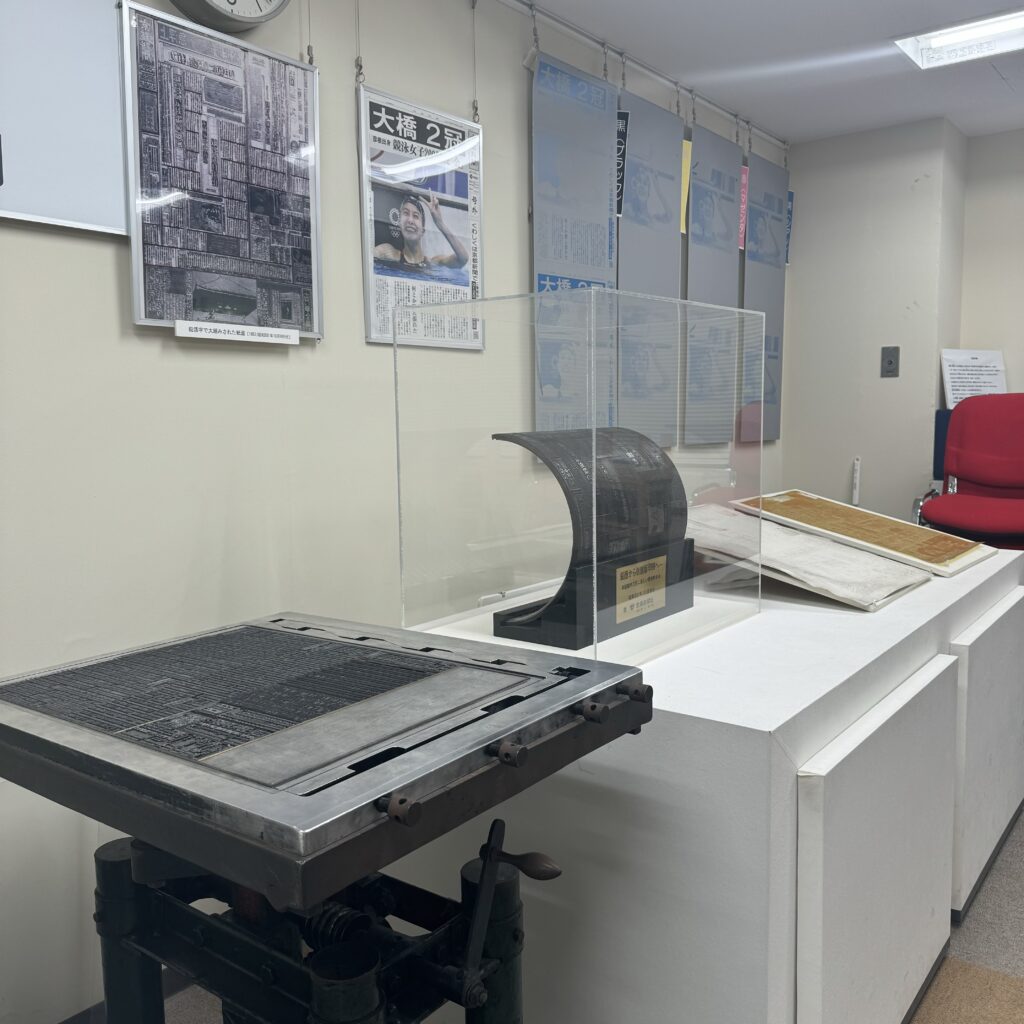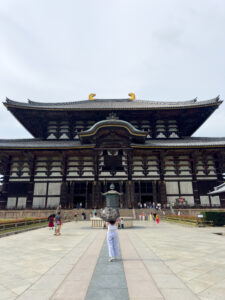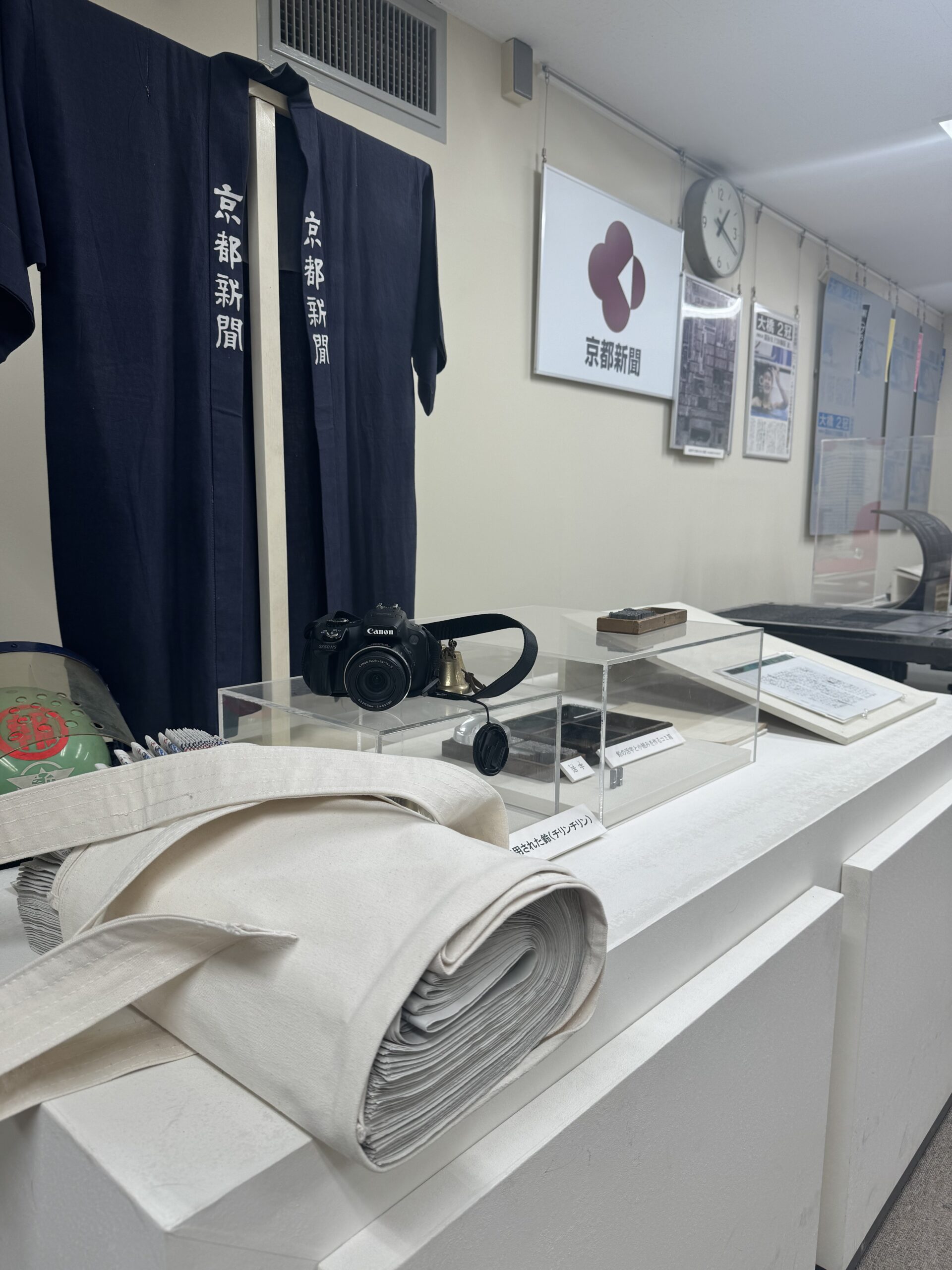
Kyoto, one of Japan’s oldest cities and former capital, is a testament to the country’s enduring traditions in a modern landscape.
The Kyoto Shimbun, one of Kyoto’s treasured relics, is preserving tradition while also embracing contemporary innovations. In June 2024, SJMC Japan delved into the newspaper’s significant impact in the region, uncovering its operational intricacies and witnessing its remarkable evolution in the digital age.
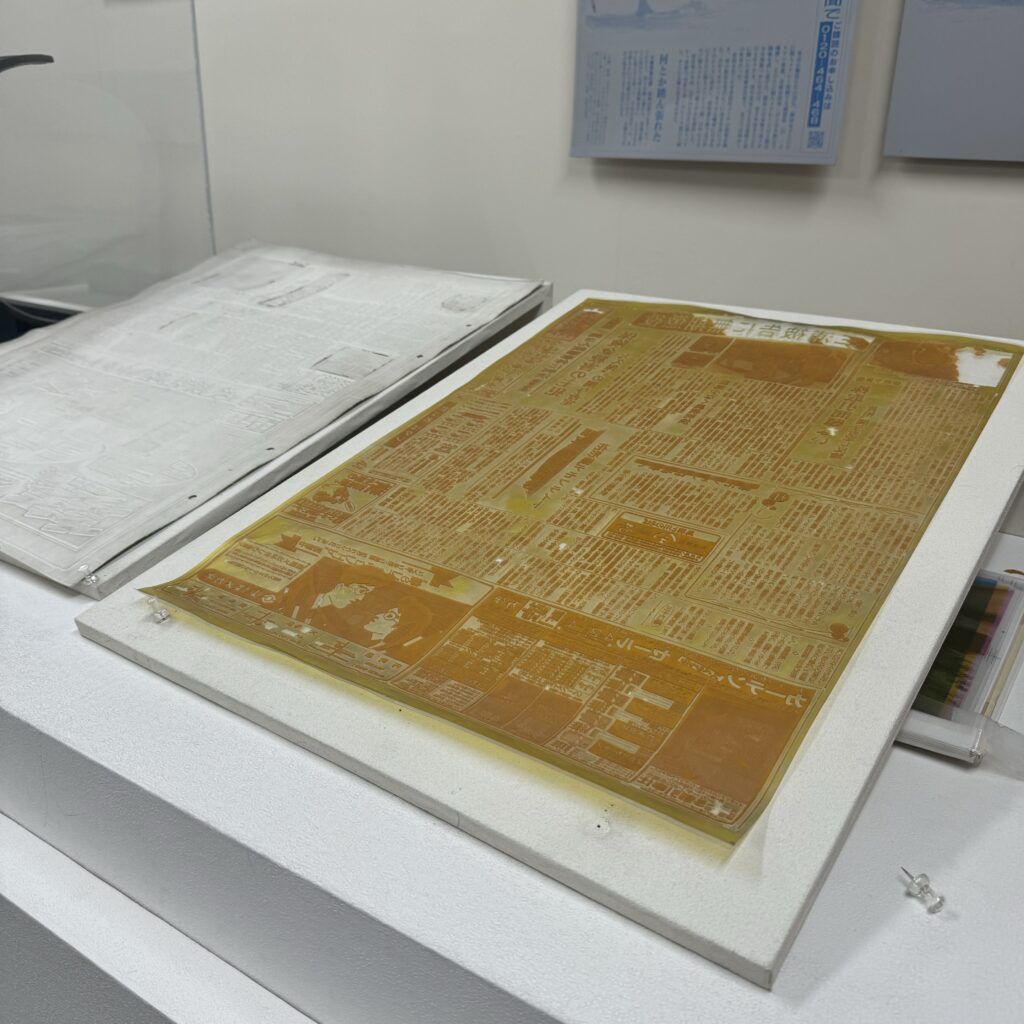
The Kyoto Shimbun was founded in 1879 and has had several name changes since. It started off as the Kyoto Current Events Paper and was renamed the Sunrise Newspaper before settling on its current name. Like its name, the Kyoto Shimbun has evolved since its founding, reflecting the dynamic changes within Japanese society.
Today, as it has historically, the newspaper serves as a vital source of information for the Kyoto and Shiga prefectures. Its long history is marked by a dedication to upholding traditional media values while reporting on local and national topics to keep their audience informed.
One of the defining moments for the Kyoto Shimbun was the 2011 Fukushima earthquake. During this crisis, which claimed more than 20,000 people, widespread electrical outages shut down electronic media, forcing people to rely on the Kyoto Shimbun for critical life-and-death information. This event underscored the importance of print media and its role as a reliable source of news, especially during emergencies.
During their visit, students were guided through the newspaper’s headquarters by Midori Dei, a newspaper employee who led our tour. Dei, like all employees at the newspaper, plays an important role by offering a comprehensive look into the publication’s strategies and operations. Through her detailed explanations and Q&A session featuring Kyoto Shimbun culture and arts reporter Yuko Hayashiya, Dei emphasized the significant work and impact of the newspaper.
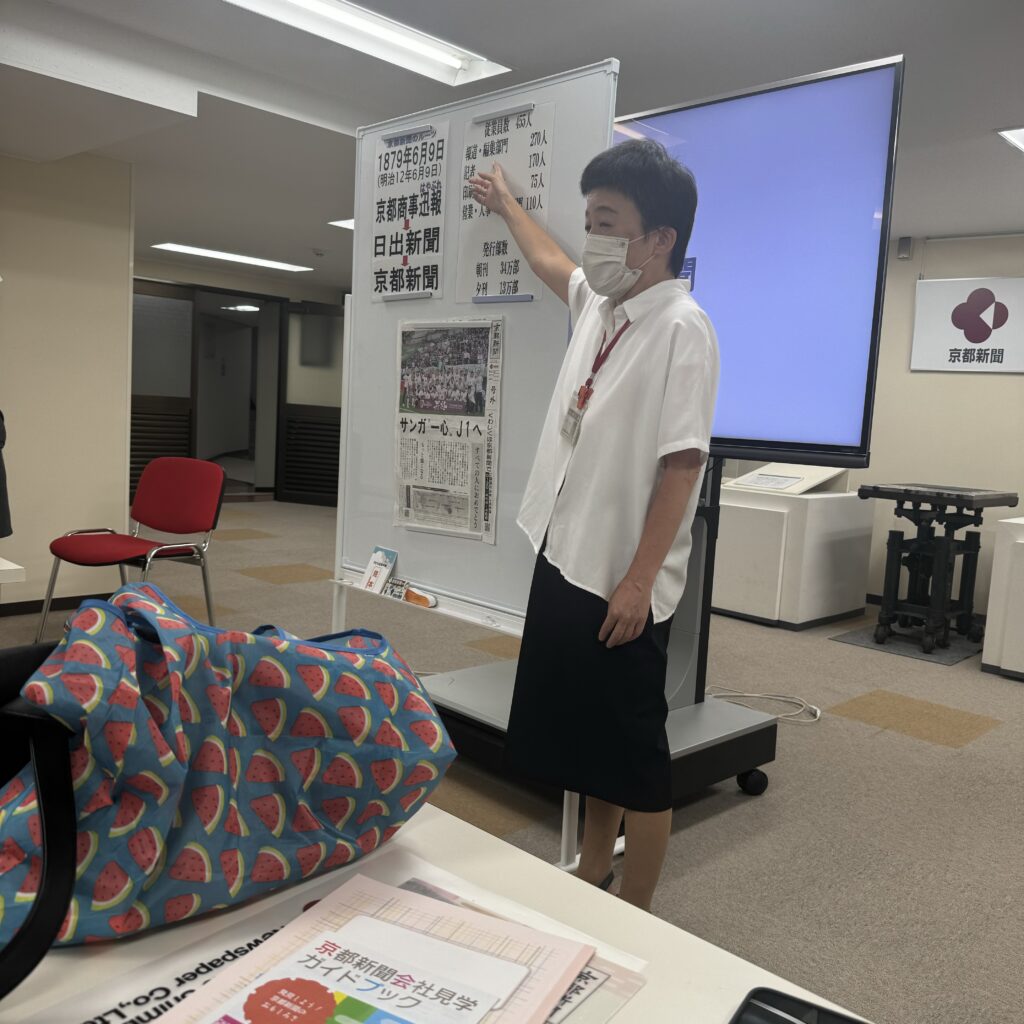
According to a video shown to students during the tour, the company employs 455 people, with 270 in editorial and reporting roles, 170 of whom are reporters, 75 in print and distribution and another 110 in office operations. The Kyoto Shimbun operates 24 hours a day, 365 days a year, to ensure coverage of a diverse range of topics, from local news and government affairs to economics, current events and local interest stories. The newspaper also pulls global stories from the Kyodo News wire service, Dei said.
The Kyoto Shimbun’s reporting is facilitated through four departments: reporting, sports, culture and cross reporting (its digital department). Each department plays an essential role in ensuring the seamless delivery of news to the public.
The reporting department serves as the newspaper’s core, covering current events, social issues and local interests. Reporters visit various locations to gather stories, capturing the essence of community life. Once the reporting is completed, the articles are brought back to the office for a meticulous editing process.
Sports coverage at the Kyoto Shimbun is comprehensive, spanning from local amateur sports to professional leagues. The sports department, for example, provides extensive coverage of amateur and professional sports, including Kyoto’s professional soccer team – Kyoto Sanga – whose matches are closely followed by reporters who also travel with the team when necessary.
Kyoto’s rich cultural heritage is covered by the culture department. The newspaper’s culture section covers Kyoto’s numerous cultural and artistic locations, with topics from traditional arts and entertainment including the city’s various festivals, to modern cultural phenomena. According to Dei, this section also includes comics, providing a lighter touch to the newspaper’s content.
The cross reporting department innovatively bridges the gap between print and digital media. Stories prepared for print are adapted for digital platforms, ensuring timely updates for the newspaper’s online audience. This sector ensures that the online and print versions of the newspaper align, offering a cohesive news experience. The coordination between online and print sections is essential for maintaining consistency and quality.
While the Kyoto Shimbun remains true to its traditional print journalism mission, it also employs technological innovation to enhance that mission. The use of drones for aerial photography and state-of-the-art camera equipment allows for extraordinary shots that accompany their stories. The intense editing process for both photography and written content ensures that only the highest quality material is published. Photographers play a vital role, not only capturing images but also selecting the best ones for publication. Dei explained that of the thousands of photos that may be taken for a story, after a rigorous selection process, only one will be selected for publication.

Every day, the Kyoto Shimbun distributes a morning edition and a evening edition. The newspaper prints about 340,000 copies for its morning edition and about 130,000 copies for its evening edition. The newspaper operates around the clock, with a 24-hour news cycle ensuring that updates are continuous and timely. The morning edition’s deadline is midnight, while the afternoon edition must be completed by 11 a.m.
The story selection and editing process are meticulous, Dei explained. Hayashiya, who has been with the newspaper for over 30 years, explained the hurdles of reporting and meeting deadlines, including the importance of fact checking to avoid misinformation. The newspaper acquires over 2,000 unique stories daily, but will ultimately publish about 200 stories a day. After reporters submit their articles, editors hold a budget meeting to determine which stories will be selected for the following day’s morning edition. Once stories are selected, the editing department reviews them for clarity, flow and readability.
The editors, which also work around the clock, discuss and revise the articles multiple times. The stories are then sent to designers who consider the layout, font size and representation of sources in the stories to ensure a quality final product. Physical copies are then printed for review by editors who go through line by line with a red pencil for an additional layer of quality assurance. Once approved, the articles are sent to the presses.
At the press, nine large machines print in color and eight in black and white, which are capable of producing over 200,000 sheets per hour. Robotics manage the 1.4-ton spools of paper. This automated process allows for a smooth and efficient printing process. Final checks are conducted manually to maintain quality standards. The newspapers are then delivered to 180 different distribution locations within the prefectures.
The delivery process is a crucial part of a seamless workflow with staff preparing and delivering newspapers by foot, bike or vehicle. This massive effort guarantees that the newspaper reaches its readers promptly every day.
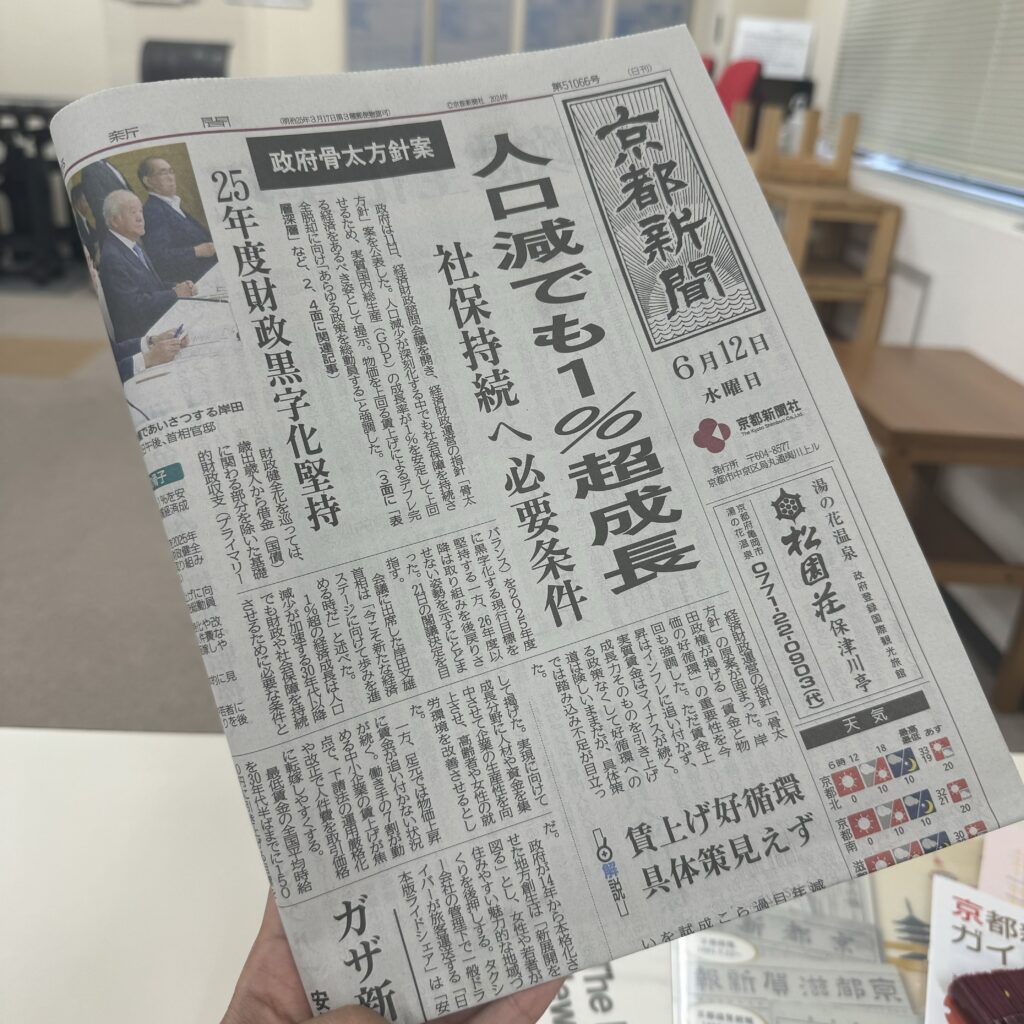
In addition to its print edition, the Kyoto Shimbun maintains a strong online presence. Its website and social media pages are updated 24 hours a day, offering the latest news and information. A smartphone app was developed for accessibility, providing readers with news at their fingertips.
After their tour, students felt enlightened about the publication’s processes and were inspired by its mission.
“The thing that really impressed me is when she explained that they [Kyoto Shimbun reporters] go to schools to teach kids how to read a newspaper,” digital media innovation senior Laura Restrepo Posada said. “I think that is so important in a society. If the kids know how to get information, that is power.”
Other students compared their experience visiting the Kyoto Shimbun to their visits with other publications.
“As someone who has toured many American newsrooms, the lack of chaos [stood out],” advertising junior Lauren Reid said. “It was very quiet, toned down, very traditional. There was quiet discussion. It was very calm.”
As a keepsake, the Kyoto Shimbun printed a story about the students’ visit, commemorating the event with a group photo, and showcasing the swift efficiency with which the newspaper operates to produce stories.
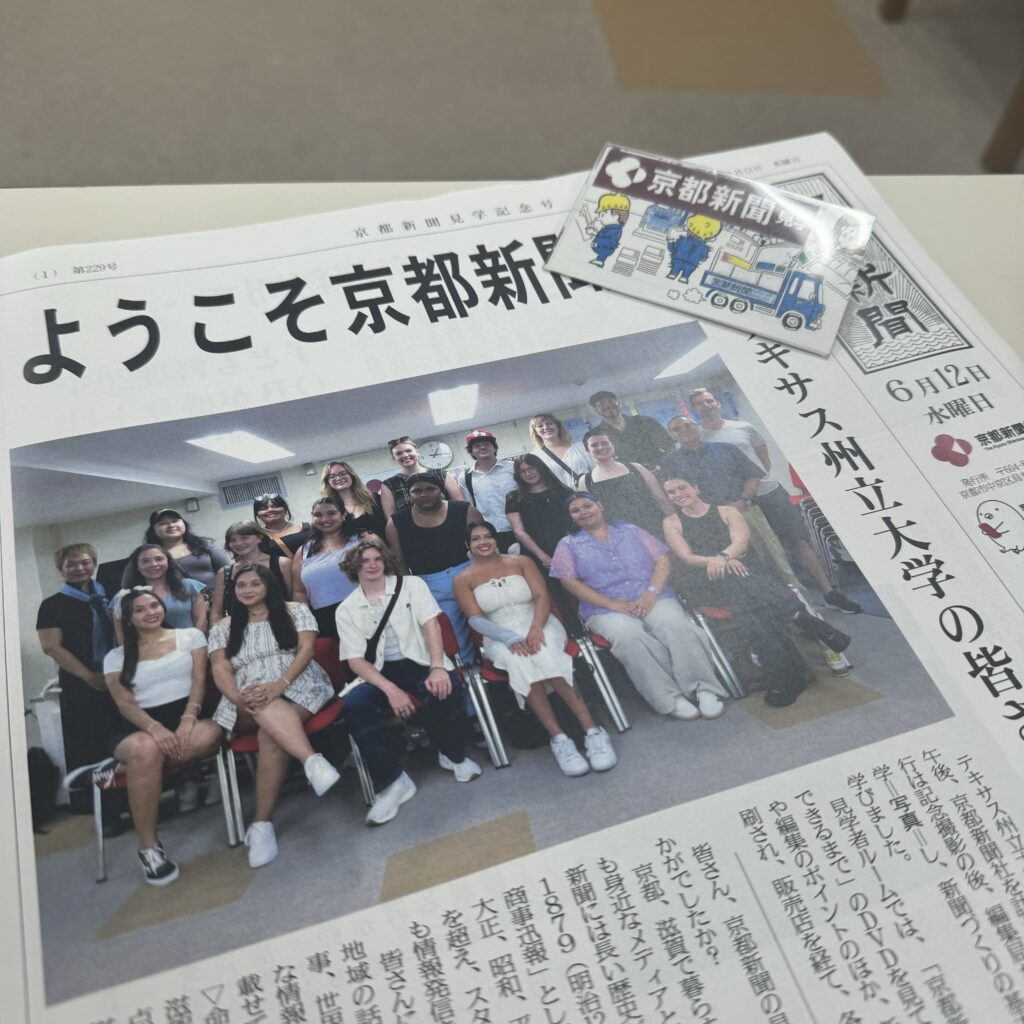
The Kyoto Shimbun is a cultural institution that has documented the history and evolution of Kyoto and the Shiga region for over a century. Its commitment to quality journalism, technological innovation and public service makes it a fundamental element of Japanese media. As it continues to adapt to the digital age, the Kyoto Shimbun remains dedicated to its mission of delivering comprehensive and reliable news to its readers, both in print and digital versions.
From its humble beginnings in the late 20th century to its current status as a leading regional newspaper, the Kyoto Shimbun has consistently upheld the values of accuracy, integrity and dedication to the community. With its expert team of reporters, editors and staff, The Kyoto Shimbun remains a trusted source of news and information both locally and globally.
